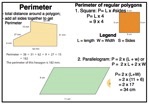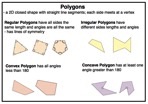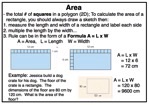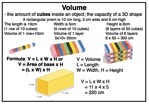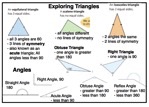Math Resources Grade 5 Alberta

MATH
Are you working on your math but can’t remember what that ‘annoying’ math word means? Use this Math Dictionary, organized alphabetically, to help you figure it out. Crisis averted!
Numbers are everywhere in our world. From sports statistics to weather reports, making budgets to getting your allowance. If I want to buy my new Xbox or Playstation, it’s kind of important to be able to a) read the price and b) be able to count my money. In this unit, we will be working with reading and writing numbers, as well as manipulating them in problem solving situations. Operation skills, estimation and everything in between - it’s a lot but hey, that Xbox is awesome and need to count my piggy bank coins!
Reading and writing numbers is huge. If we can’t read the numbers in-front of us then there is no way we can solve the problem. We use the rules of Place Value to get the job done.
We can prove the value of any number and their digits by writing it in any of 1 of 3 ways.
Expanded Form | Word Form | Standard Form
When working to solve problems or to help ourselves check our work, we can use Mental Math strategies, aka estimation, to help make things easier.
Open for Larger
<-- -->
There are many ways to estimate but there are three methods that can be used in any situation.
Front End Estimation | Benchmark | Compatible Numbers



Use these links to practise and review how to solve problems with addition.
Use these links to review how to solve problems with subtraction.
Use these links to review how to solve problems with multiplication.
Long Division Notes & Explanation

Fractions and decimals are everywhere in our lives. You use them all the time and often don’t even realize it. Cooking, money, sports, time, games, and medicine are just a few examples where you use fractions or decimals. As part of this unit, we will be working with these ideas to improve our number sense skills. When did you use fractions last?





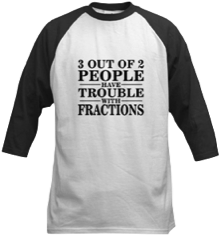
The month of March means one thing, and one thing only - March Madness. On top of the slam dunks, the alley-oops and the crossovers, basketball is filled with Math. The best basketball tournament in the world is also the best way to see how fractions, decimals and percents all add up to a NCAA National Champion.

What are the odds the Flames will make the playoffs? How likely is it for the Blue Jays to beat the Yankees? The Red Sox? If the students in the class were asked what their favourite sport was, how many would say hockey? These are all questions that could be used in our investigation into Statistics & Probability.
Class Notes Probability Intro | Theoretical Probability | Experimental Probability
MathsIsFun.com Probability | Probability Line | Bar Graphs | Line Graphs | Pictographs | Pie Chart
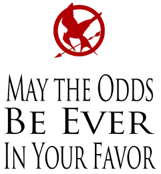
Our world is filled with shapes large and small, with angles, lines and different geometric shapes. It’s the oldest math, the most basic math - “What shapes fit together to let me build something?” In this unit, students will be exploring the world of angles, polygons, volume and area, as well as how we can measure these. Lastly, students will be exploring 2D and 3D shapes with their different characteristics.
Measurement Resources
Metric System (mm, cm, km, m) | Area | Perimeter | Volume | Mass (Weight) | Clocks | Converting Metric/Imperial
Geometry
Polygon Information | Interactive Polygons | Area | Perimeter | Volume
Open a Concept Review Card to download




Check out these websites or games to practise your math facts.
Math Facts Basketball | Fact Monster Flash Cards | Fast Facts | A+ Math Games | Fun4TheBrain Games
Tux of Math Command (Must Download) | Math Flash Cards | Math U See Drills

Math is everywhere and so are the places you can go to practise and learn. In grade five we have lots of different resources that we can use. These are some links that can help you with all areas of math. You can thank the General for all these helpful sites. Just make sure you do what he says!


Number
Place Value | Order Whole Numbers | Integers | Number Lines | Estimate Whole Numbers | Expanded Notation
Operations
Estimate Sums & Differences of Whole Numbers | Relate Addition & Subtraction | Addition with Regrouping
Properties of Addition | + & - without Regrouping | Subtraction with Regrouping
Multiplication | Single-Digit Division | Double-Digit Division | Divisibility Rules | Prime & Composite Numbers
Relate Multiplication & Division | Prime Factorization | Distributive Property | Multiples

Fractions
Fractions | Compare Fractions & Mixed Numbers | Simplest Form | Add & Subtract with Unlike Denominators
Add & Subtract Mixed Numbers | Least Common Multiple | Equivalent Fractions | Order Fractions & Decimals
Add & Subtract with Common Denominators | Finding a Fraction of a Set | Decimal & Fraction Equivalents
Decimals & Percents
Compare Money Amounts | Place Value of Decimals | Addition & Subtraction of Decimals
Multiplication of Decimals | Percents | Making Change | Rounding Decimals | Place Decimal on a Number Line Division of Decimals | Decimal, Fraction & Percent Equivalents

Probability
Probability as a Fraction | Combinations | Identify Outcomes and Make Predictions | Find Probability | Tree Diagrams
Statistics
Median | Range | Mean/Average | Mode | Bar Graphs | Line Plots | Circle Graph | Double-Line Graphs | Pictograph
Stem-and-Leaf Plots | Histograms | Choosing the Correct Graph

Measurement
Tell Time | Elapsed Time | Convert Units of Time | Using a Calendar | Units of Measurement | Tell Temperature
Tools of Measurement | Add & Subtract Measurements | Customary Units of Length | Measure Length | Perimeter
Area of a Parallelogram | Area of Irregular Figures | Area of a Triangle | Surface Area | Volume
Geometry
Types of Lines | Construct Angles | Measure Angles | Classify Angles | Classify Triangles | Classify Quadrilaterals
Solid Figures | Similar Figures | Lines of Symmetry | Transformations | Congruent Figures | Edges, Faces & Vertices















